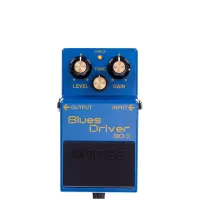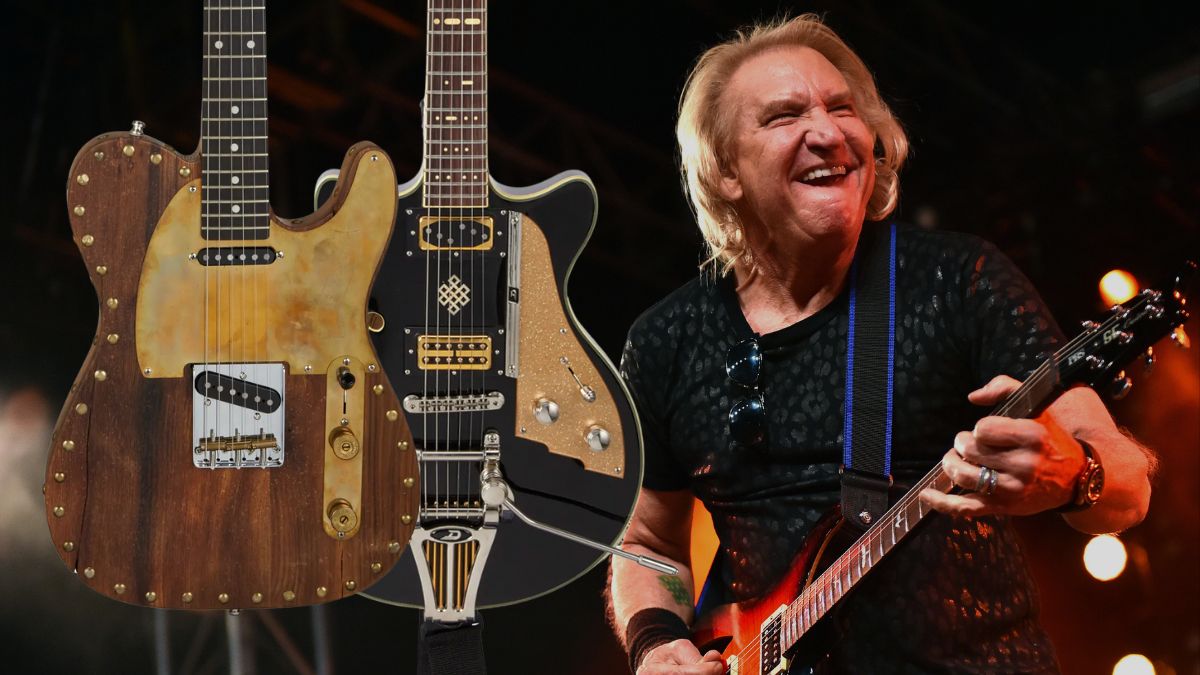Guitar World Verdict
A genuinely natural-sounding overdrive, built to reflect the sound of your carefully curated guitars and amplifiers. The added extras result in a surprisingly versatile analogue drive pedal that could surely find a place on almost any 'board
Pros
- +
Natural sounding overdrive.
- +
Extra features that make it surprisingly versatile.
- +
Foot switchable boost function.
- +
Rock solid build.
Cons
- -
Bass cut knob is slightly awkward to use.
- -
Boost can sound a little sharp.
- -
The level and tone of the boost can't be tweaked.
You can trust Guitar World
What is it?
The Nobels ODR-1 is that other green overdrive pedal. You may be forgiven for assuming that the colour indicates a pedal of the Tube Screamer ilk, but this is not the case. Devoid of that TS mid hump, the Nobels is instead a more natural-sounding overdrive, made legendary by the likes of respected session players Tim Pierce, Tom Bukovac, and Guthrie Trapp.
Originally designed in 1985, we have seen a number of iterations featuring added extras and refinements, with the ODR-1X being the latest in the lineup. The additions in this most recent model may make the pedal an irresistible purchase if they work as promised.
Before we jump in, a very brief history of the refinements introduced for the full-sized OD1 to set a little context. The original OD1 featured a Drive, Spectrum (tone, sort of), and Level control, with the ability to add a remote footswitch to turn the pedal on and off. Easy.
Then, the Nobels OD-1BC introduced an internal bass cut switch and the option to run the pedal between 9V and 18V. Now the ODR-1X builds on the BC by putting the bass cut control on a mini rotary knob, adding a gain boost, an option to switch between true and buffered bypass, and allowing for the external footswitch to bring in the gain boost, as well as turn the pedal on and off. Now that you're caught up (if you needed it), let’s see how the ODR-1X performs.
Specs
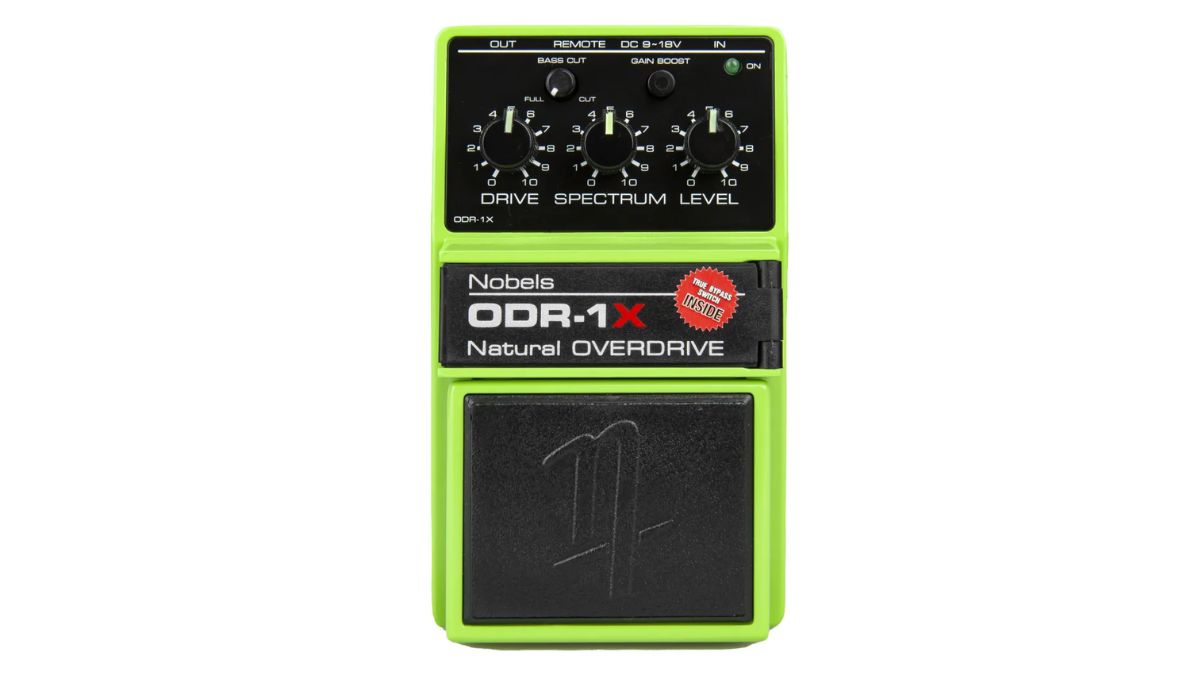
- Launch price: £129.99/€147/$149
- Type: Overdrive
- Controls: Gain, Spectrum, Level
- Features: Bass cut control, external footswitch compatibility for gain boost and on/off, switchable true/buffered bypass
- Bypass: Switchable true or buffered bypass
- Power: 9V-18V
- Dimensions: 2.91"x2.28"x4.96"/7.3x5.7x12.5cm
- Weight: 0.93lbs/422g
- Contact: Nobels
Build quality
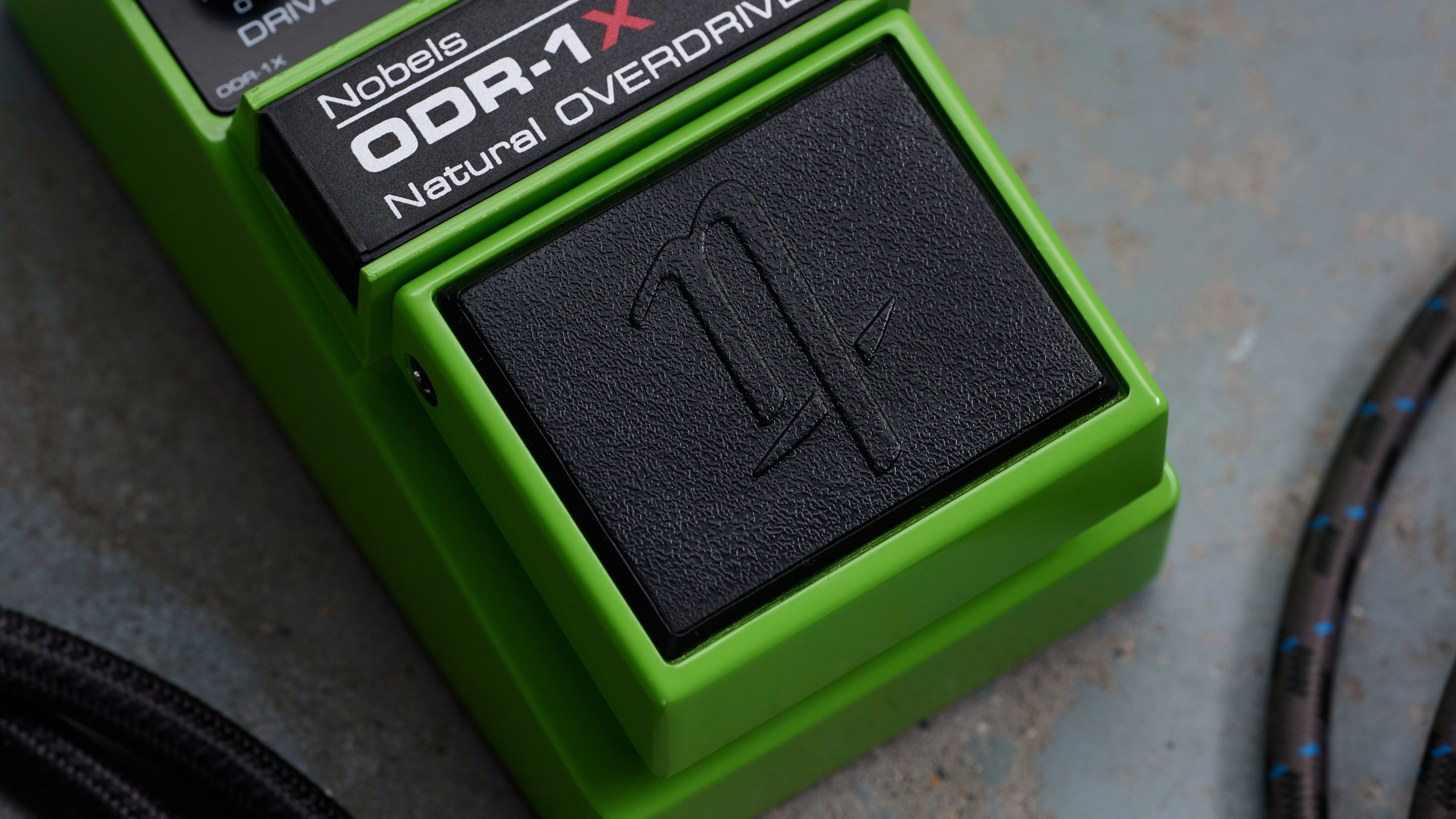
Build quality rating: ★★★★½
A true gigging tool, the metal chassis on the ODR-1X with its chunky footswitch makes for a pedal that feels nigh on indestructible. The rotary knobs all have slight but reassuring resistance, and the switch for the gain boost feels capable of withstanding plenty of wear and tear.
The only thing that seems slightly flimsy is the 9V battery compartment, but it is sturdy enough that I’m confident that it will last, as long as you're not giving it too much abuse.
All the latest guitar news, interviews, lessons, reviews, deals and more, direct to your inbox!
The base of the pedal also features Nobel's Mounty P pull-out brackets, which allow the player to screw the pedal down. Personally, I don’t see the use for this, as hook and loop fasteners are the affordable industry standard that work well on any pedalboard if you do use them properly, but I guess it’s a nice option to have.
All in all, it’s a fairly simple build with very little that can go wrong. It’s not an expensive pedal, but it doesn't quite sit in the affordable bracket either, so we are right to expect a solid road-ready construction, which we do indeed get.
Usability
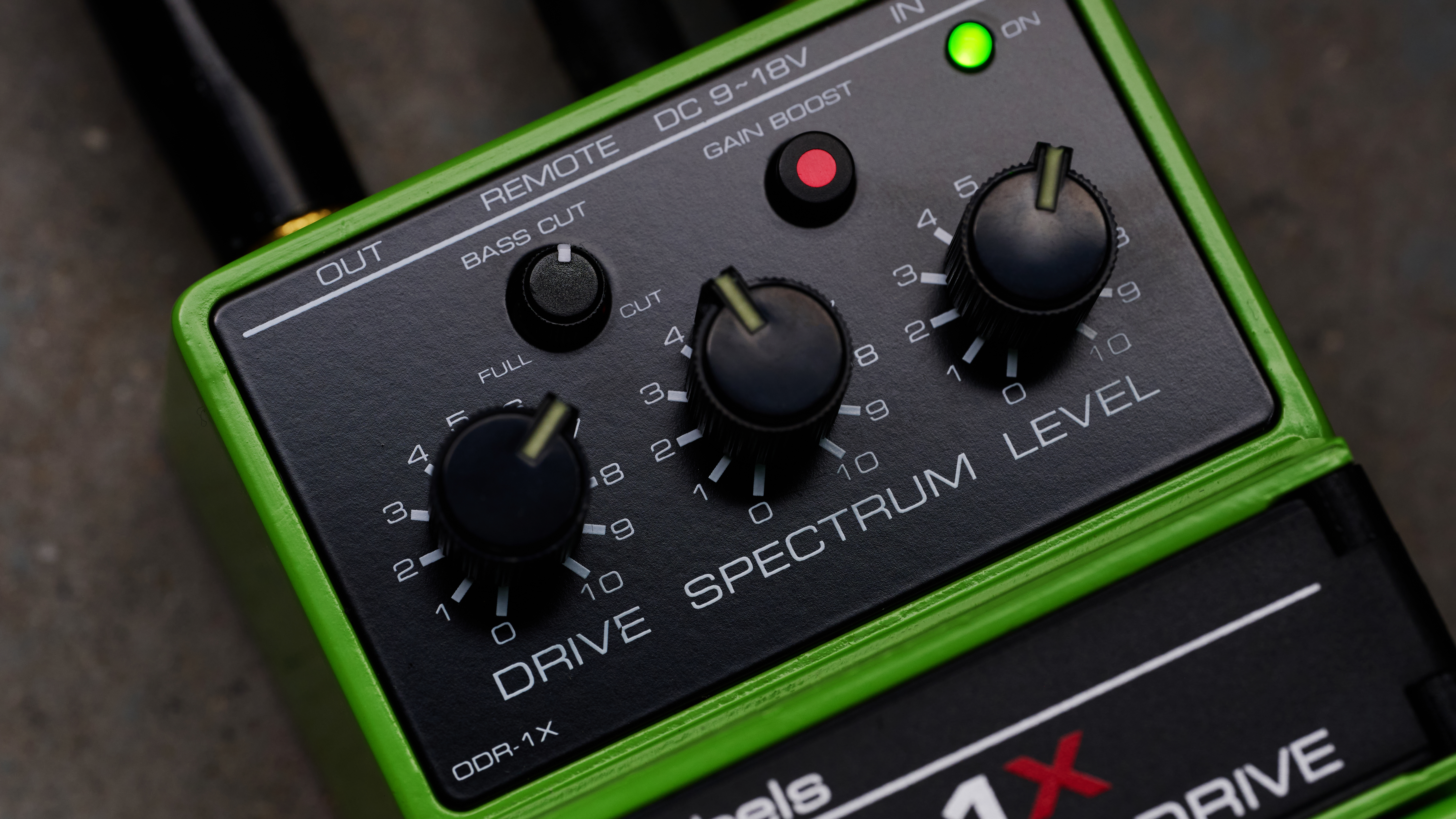
Usability rating: ★★★★½
More in-depth than most analogue drives, yet it feels straightforward thanks to a layout that’s easy to understand.
A simple build often arises from a simple pedal, and whilst the Nobels is more in-depth than most analogue drives, it feels straightforward thanks to a layout that’s easy to understand.
The Drive, Spectrum, and Level knobs are self-explanatory, with the Bass Cut mini knob and Gain boost switch sitting just above them. The Bass Cut feels a little awkward in use, as it is very small, doesn't protrude much from the chassis, and is close to the Drive and Spectrum knobs, making it a little tricky to get a set of average-sized fingers in there.
And when I say a ‘little’ tricky, I do mean little, as it sits firmly in the ‘minor inconvenience’ bracket rather than a serious issue, and I do much prefer having this as a rotary knob rather than an internal switch, as with previous versions.
The True/Buffered bypass switch is internal; however, this is exactly the circumstance where this is appropriate. Rather than a tonal option, it’s a decision a player would make based on the rest of their setup and is unlikely to change often; therefore, if there has to be an internal switch to make space on the top panel, it makes complete sense that it’s a function like this.

Moving around to the back of the pedal, we have three top-mounted jacks for In, Out, and Footswitch. The ability to activate the gain boost via a footswitch adds a huge amount of functionality to the pedal, making it almost dual-channel. In lieu of an external footswitch, the gain boost is easily activated via a button on the front panel.
Lastly, the convenient placement of the 9V battery is a big plus in my book. Many pedals require a screwdriver to get into the battery compartment, which is kind of a big deal if you turn up to a gig having forgotten to replace your battery and have to scramble for a screwdriver minutes before you are due to begin.
Having the ability to simply pop open the compartment from the front makes this process quick and easy, eliminating that problem and saving some stress when the inevitable forgetful mishap occurs. Assuming you’ve remembered a spare battery.
Sounds
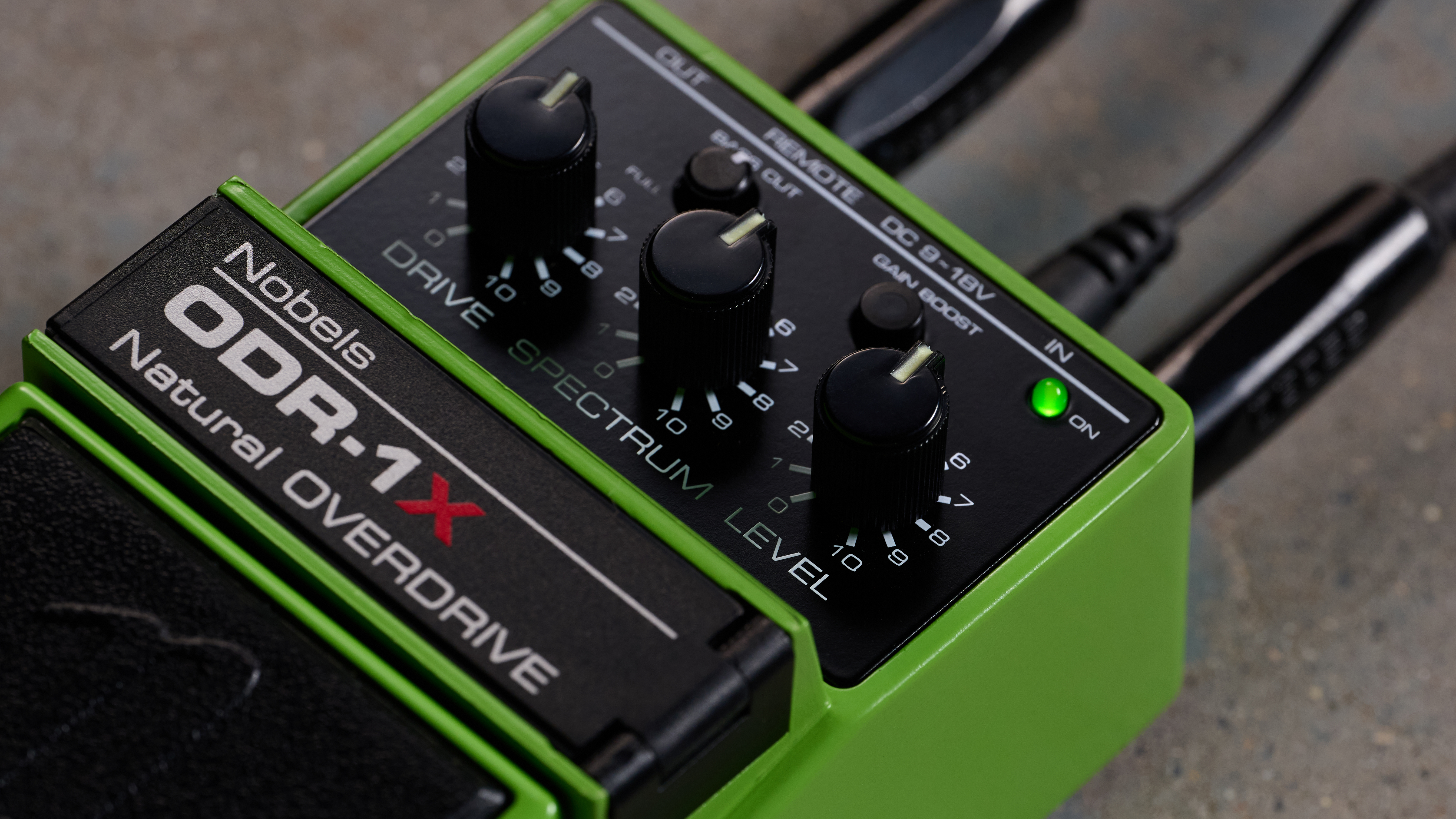
Sounds rating: ★★★★½
Nobels promises the ODR-1 range to be a natural overdrive, implying that it will not impose its own tone onto that of our often discerning choice of guitar and amplifier. It becomes clear upon getting some sounds from the ODR-1X that the claim holds weight. It reacts brilliantly to the differences between my Telecaster and Les Paul, creating a full but smooth sound that reflects the characteristics of the two guitars well.
It reacts brilliantly to the differences between my Telecaster and Les Paul
This tone is refined by the Spectrum control, which is, in Nobels' words, a “double filter control”, adjusting the high and low frequencies while leaving the mids largely untouched. In use, this doesn’t sound like your average tone control, as at zero, it creates a warm, more mid-focused sound where your standard tone control would still be warm, but in a more bassy and woolly sense.
When turned to 10, the Nobels sounds bright and punchy, bringing in some more full-range fizz, which is a little much on my Tele, but a setting closer to this suits darker guitars. There also seems to be some more level added here, more than I would expect if it were just the perceived level change indicative of making a tone brighter.
With this, I find myself setting the spectrum in response to my choice of guitar, so that I can retain the open sound I enjoy from the pedal. With my Tele, I have it set to 5, and a little closer to 7 for my Les Paul. It’s a different approach to a tone control, which really has to be heard to grasp said differences, but it’s an approach that seems to lend itself to getting the most out of a guitar.

It goes from lightly driven to classic rock territory, all whilst maintaining the aforementioned full and natural tone
And this seems to me to be the hero of this pedal, and is particularly apparent within the gain range. It goes from lightly driven to classic rock territory, all whilst maintaining the aforementioned full and natural tone, again reflecting the nature of your chosen guitar and amp combo. What’s more is that it cleans up on the volume control beautifully.
I’m a massive fan of the sound of single coil pickups on the Nobels, strumming through Keith Richards-esque parts with every note ringing out loud and clear. The lead playing feels articulate and responsive too - it’s no wonder this is a pedal loved by Nashville legends.
Looking for more gain, I set up that aforementioned classic rock tone, then I bring in the gain boost to immediate, piercing feedback. Nobels took the word Boost seriously, as it adds a significant kick in gain, arguably a little too much when there's no way to control the boost it adds. Tonally, I found the boost a little sharp on both single coils and humbuckers, but it sure would cut through a mix.
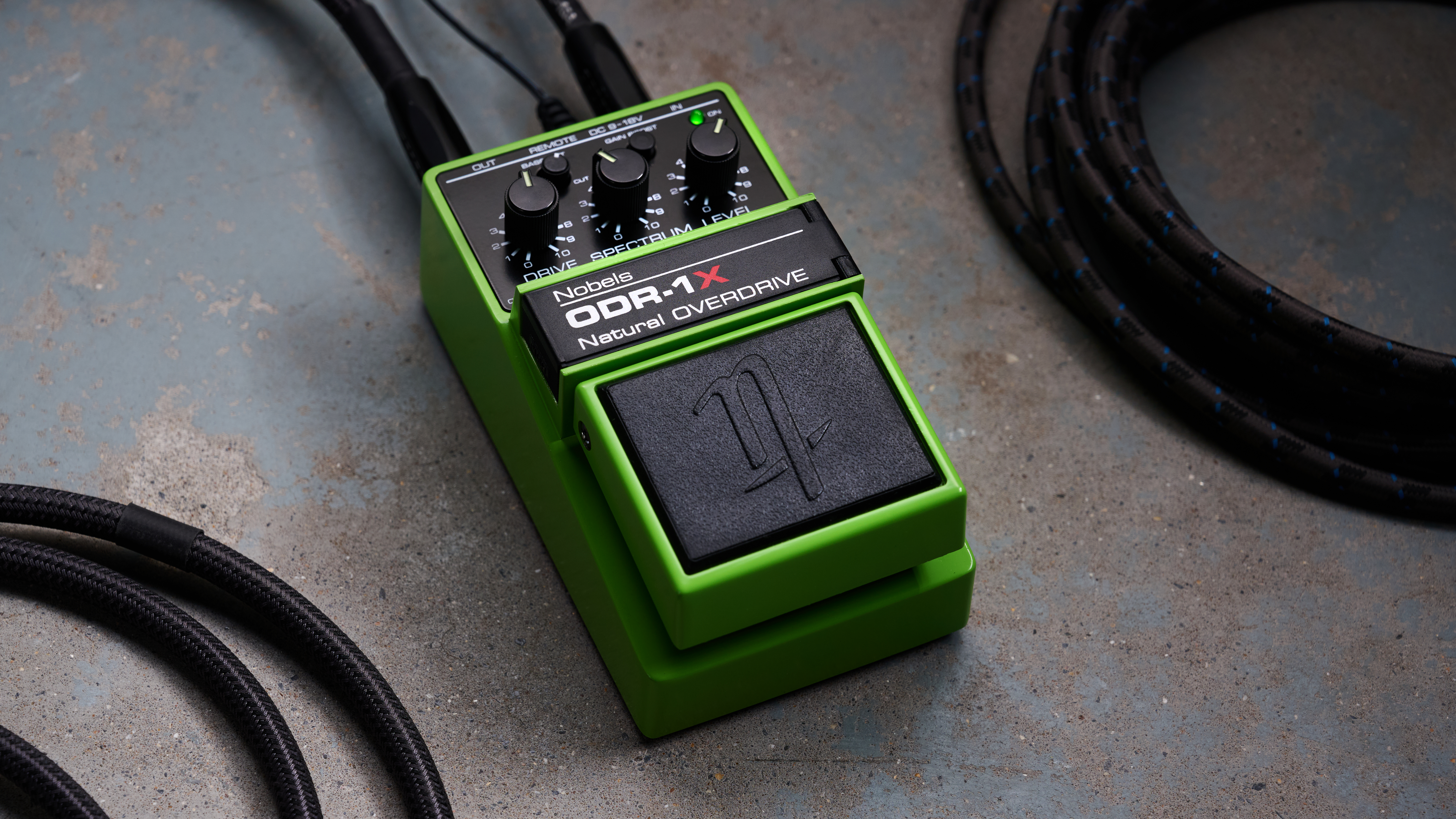
Where I feel the boost works best is with the gain set around five to give a nice, lightly driven rhythm sound. Then, when the boost comes in, it lifts the gain to a huge rhythm tone, right at the heavy side of rock. With an additional footswitch plugged in, this creates a versatile, dual drive pedal.
Set a tube screamer in front of either of these sounds, crank the screamer's level, and the Nobels will welcome it with open arms, creating a heavenly, sustain-soaked saturation that is endless fun to play Bonamassa-style solos on.
Right next to the gain boost sits the bass cut. This is a subtle control that lightly tames the low end so that higher gain settings can avoid becoming too loose and flubby. Using the pedal on its own, I found myself leaving the bass cut mostly untouched, only bringing it in when I was gunning the gain on a set of humbuckers.

The bass cut tightened everything up nicely, turning the OD-1X into a highly capable boost pedal that is just downright fun
However, when using the Nobels ODR-1X as a boost into another drive pedal or driven amplifier, the bass cut becomes invaluable. Using it into my Boss Blues Driver BD2 and utilizing the significant amount of level on tap to push the BD2 into heavily saturated territory, the bass cut tightened everything up nicely, turning the OD-1X into a highly capable boost pedal that is just downright fun.
The final thing to touch upon is the ability to run the pedal at 18V. The audible difference is noticeable but subtle, in that it results in slightly less compression and a sound that is a little more open. Both these things are felt more than they are heard by furthering the dynamic response under the fingers. Despite both modes sounding great, this subtle difference is something that, once you have tried it, can’t be unheard or unfelt, so, personally, I would always run the Nobles at 18v.
Verdict
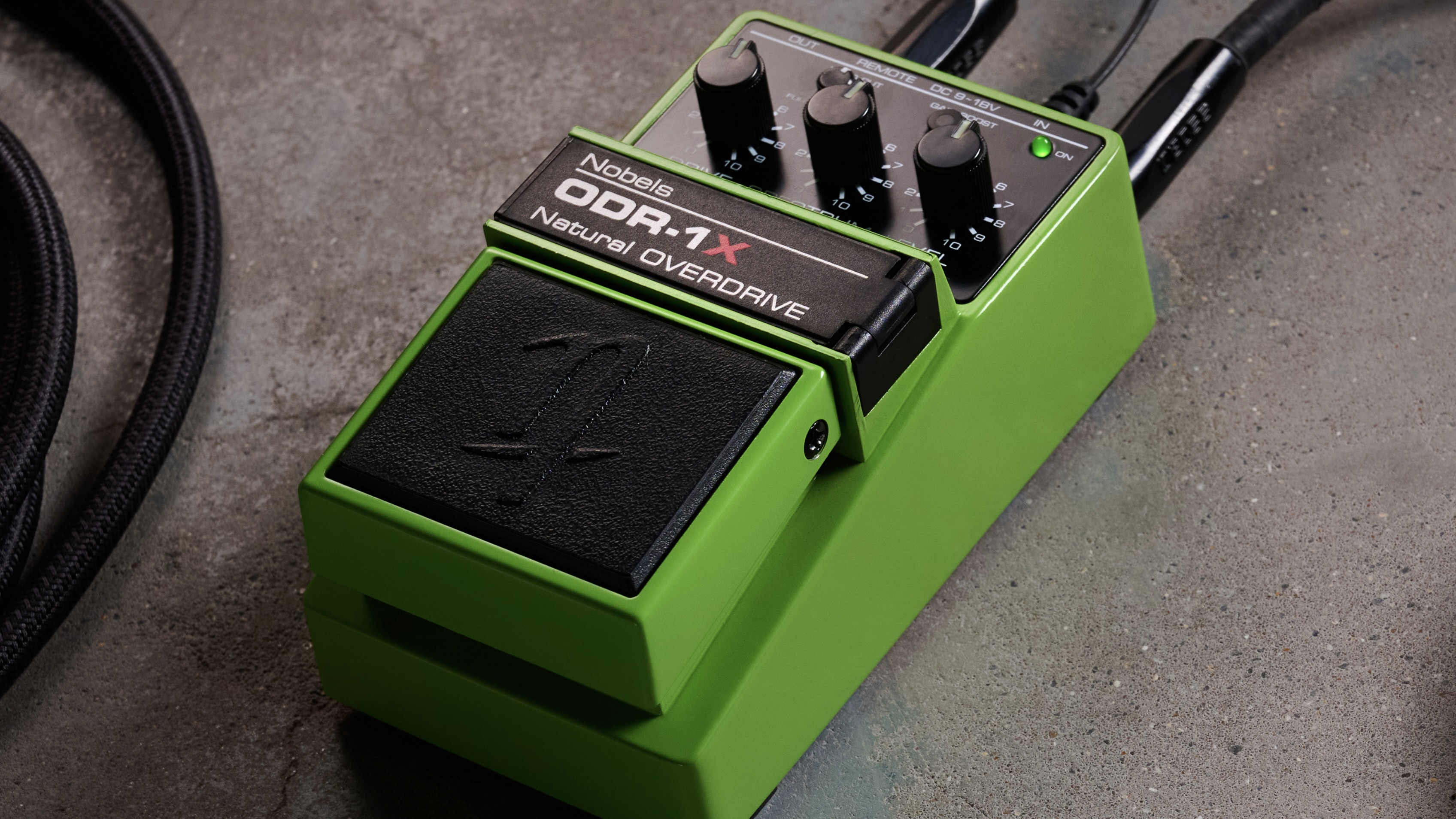
The Nobels OD-1 sound has earned its revered status amongst discerning players
The Nobels ODR-1X, then, is a welcome addition to the Nobels ODR family. It provides an array of genuinely useful extras, creating a surprisingly versatile and natural-sounding analogue overdrive.
It is this natural sound that is the hero here, and having spent some time with the pedal, it is clear that The Nobels ODR-1 sound has earned its revered status amongst discerning players. There are a few minor inconveniences, such as the slightly awkward Bass Cut control and the Boost that can’t be tweaked, but even so, these features still add a huge amount of functionality to a fantastic-sounding pedal at a reasonable price, making the ODR-1X well worth the little jump up in price from the ODR-1BC.
Guitar World Verdict: A genuinely natural-sounding overdrive, built to reflect the sound of your carefully curated guitars and amplifiers. The added extras result in a surprisingly versatile analogue drive pedal that could surely find a place on almost any 'board.
Test | Results | Score |
|---|---|---|
Build quality | Built like a tank, with the exception of the battery compartment. | ★★★★½ |
Usability | An easy to understand layout, but a slightly awkward bass cut knob. | ★★★★½ |
Sounds | Great natural sound, built to reflect your guitar and amp. | ★★★★½ |
Overall | A solid, reasonably priced, natural sounding pedal, at home on almost any board. | ★★★★½ |
Also try
Boss Blues Driver BD2 $109.99/£99.99/€105
A drive that is also devoid of that mid hump character relative to the TS and Klon style pedals, the Boss Blues Driver is a humble classic, found on many a 'board..
Read more: Best overdrive pedals
Nobels ODR-Mini2 $79/£69.99/€77
That same legendary Nobels ODR-1 sound, but with slimmed-down features and packed into a tiny, pedalboard-saving enclosure.
Read more: Nobels ODR-Mini2 review
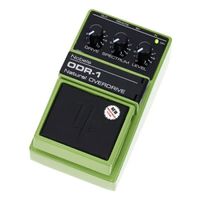
Nobels ODR-1BC $119/£99.99/€99
The ODR-1BC is the 1X, minus the extras, and a little bit cheaper. If you don't think you will use the boost function, or need the bass cut on a rotary knob, this is worth a look.
Hands-on videos
Nobels
That Pedal Show
![What About The Nobels ODR-1? [vs TS9 & BD-2w into AC15 & Deluxe Reverb] That Pedal Show - YouTube](https://img.youtube.com/vi/WjCVnFLwP9k/maxresdefault.jpg)

You must confirm your public display name before commenting
Please logout and then login again, you will then be prompted to enter your display name.

